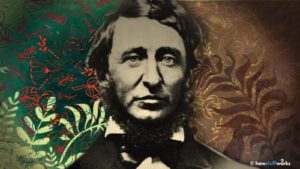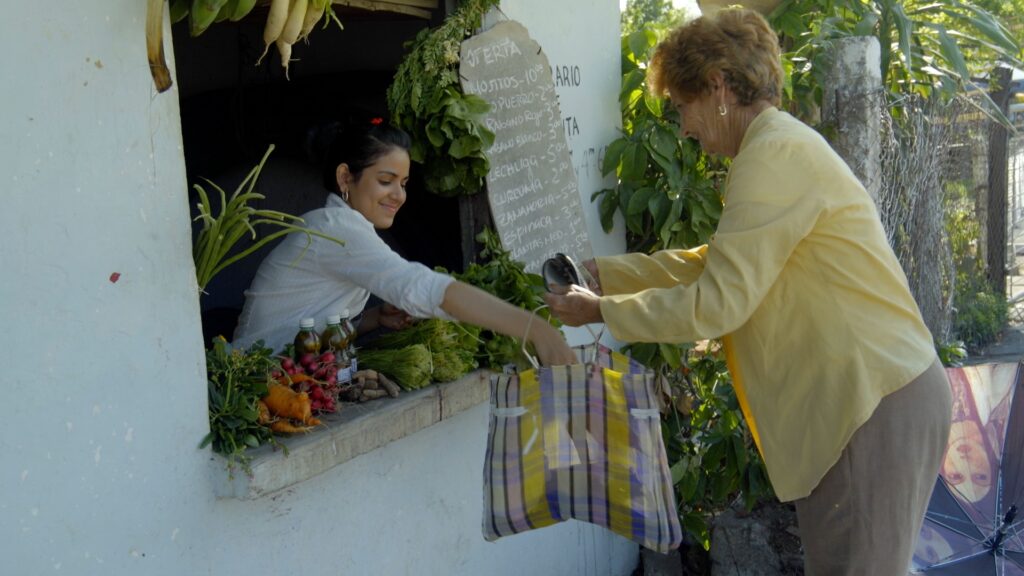Permaculture: Building Sustainable Futures for Walden’s World
As the new US administration directs USDA to remove all mention of climate change, a lawsuit run by Earthjustice is pushing back. Smaller organic farmers depend upon the information being shut down – to plan their year’s production, network and apply for grants. Decades of work have attempted to level the playing field away from corporate monocultures in favor of human-scale and permaculture-based diversified farms as a key climate and ecological solution.
In the spirit of Henry David Thoreau, who fled to Walden Pond in 1845 in hopes of finding a simpler and more conscious existence, permaculture offers modern society a vision of sustainability and harmony with nature. Jim Merkel’s “Saving Walden’s World” video reveals this vital intersection of Thoreau’s philosophy and contemporary permaculture, illustrating how ancient wisdom and contemporary design science can recreate our relationship with the Earth.

The Philosophy of Permaculture
Permaculture, a portmanteau of “permanent agriculture” and “permanent culture,” is a holistic design system for the development of sustainable communities. It was developed during the 1970s by Bill Mollison and David Holmgren, but practiced for millennia in indigenous societies. It’s presently an international movement that is concerned with living in harmony with nature, not fighting it.
By and large, permaculture takes its leading ethics from Earth Care, People Care, and Fair Share. They guide permaculturalists to systems for supporting the earth’s health as well as people’s cultures toward bringing abundance with no exploitation of resources. The societies featured in Saving Walden’s World, Cuba, Kerala, and Slovenia, all found sustainable farming useful in transforming their food system.
“The problem is the solution,” one of the principles of permaculture, reflects the ideology of the movement in transforming challenges into solutions. Rather than viewing things like steep slopes or excess water as obstacles, agroecology designers see the potential for water harvesting, terracing for gardening, or energy generation.
Permaculture Design Principles
Permaculture is more than a set of techniques but an observation- and imitation-based design practice. Twelve principles, as set out by Holmgren, form a guide to the creation of stable, self-renewing ecosystems:
- Observe and Interact: Permaculturists will take time to develop an understanding of the unique character of their site prior to making any alterations.
- Catch and Store Energy: Systems are structured to capture resources in abundance for use in times of scarcity.
- Get a Yield: Functioning systems will meet human requirements while renewing the environment.
- Regulate Self and Accept Feedback: Designs that feature mechanisms to counterbalance and correct for shifting situations.
- Use and Manage Renewable Resources: Use of renewable resources before exhaustible resources so as to be less dependent upon finite materials.
- Make No Waste: Nature’s waste is someone else’s input—permaculture mimics this same circular economy.
- Design from Patterns to Details: Where specific elements are meant to be is often guided by observing general patterns within nature.
- Bring Together Rather Than Segregate: Creating valuable relationships among parts increases system robustness.
- Use Small and Slow Solutions: Incremental, slow interventions allow for adaptation and learning.
- Use and Value Diversity: Diversity results in ecological stability and disease and pest resistance. Instead of segregating, bring together: The generation of useful relations among parts enhances system resilience.
- Utilize Edges and Appreciate the Marginal: Edges between different ecosystems have a tendency to be the most diverse and productive.
- Use Change Creatively and Respond: Viewing change as an opportunity, rather than a threat, makes adaptive design possible.
Thoreau’s Legacy in Modern Permaculture
Thoreau’s Walden Pond test, where he lived simply and alone for two years, preceded much permaculture thought. His thoughtful regard for natural rhythms, attention to keeping things simple, and musings on the connection between humans and nature, even his leanings towards vegetarianism, are all unexpectedly in concert with permaculture philosophy.

“I withdrew to the woods for this one reason,” wrote Thoreau, “because I wished to live deliberately,” a sentiment much in line with permaculture’s intention-oriented design. His experience, though 175 years ago, confirmed that fulfillment is not gained by accumulation but by conscious participation in nature.
Merkel’s film makes this connection clear, showing how Thoreau’s insights continue to guide contemporary practitioners who wish to design human spaces that enhance and not deplete the natural world.
Practical Uses of Permaculture
Practically, permaculture provides solutions to urgent environmental issues. Regenerative agriculture, an eco-conscious approach, improves soil fertility and sequesters carbon. Food forests—multi-layered edible landscapes—yield bountiful harvests with minimal care after planting.
Water-conserving systems such as swales and rain gardens harvest precipitation, preventing erosion and irrigating landscapes. Natural construction techniques employ local, renewable resources to build eco-efficient buildings that integrate harmoniously with the surroundings.
Urban permaculture retakes cities as productive ecosystems through rooftop agriculture, community orchards, and productive streetscapes. They not only yield food, but also mitigate urban heat islands, clean the air, and foster community bonds.
Challenges and Criticisms
While promising, permaculture does have its drawbacks. Its system-integrated philosophy can prove daunting to a newcomer, some critics charge, and some permaculture endeavors never quite measure up to their high ideals. The movement then struggles with scale problems—can permaculture principles really transform industrial agriculture?
In addition to that, permaculture’s dedication to site-sensitivity means no one solution works anywhere. Achievement in tropical Queensland won’t translate to desert-dry Arizona or temperate New England. That takes experimentation and constant adaptation.
As climate change and resource depletion escalate, agroecology is more relevant. Its emphasis on resilience and regeneration is an escape from a time of uncertainty. Permaculture concepts are being taken up by mainstream agriculture, urban designers, and disaster recovery planning.
Digital technologies are also expanding permaculture’s reach. Online communities enable practitioners worldwide to exchange information, and design software helps visualize complex systems. Satellite imagery and sensors enable precise monitoring of environmental conditions, guiding more effective interventions.
Continuing Relevance
Thoreau’s experiment was not only an historical curiosity but a continuing inspiration for living sustainably. As Thoreau found at his pond, today’s permaculturists seek an improved alignment with nature through attentive watching, thoughtful design, and sustainable practice.
With the world facing an unprecedented environmental crisis, the convergence of Thoreau’s philosophy and permaculture do-it-yourself ethos is a timely reminder: that, by collaborating with nature, we are able to create rich, resilient communities and mend the planet. In a world increasingly dominated by technology and disconnection, permaculture is a way back to Walden—not in retreat, but as a plan for the sustainable future we must collectively build.
About Author – Sharanya Sanil Kumar
Sharanya Sanil Kumar is the Publicist and Impact Producer for Saving Walden’s World. She is passionate about sustainability, women’s empowerment, and community-driven change, using storytelling to inspire action. She lives with her family in Kochi, Kerala.

